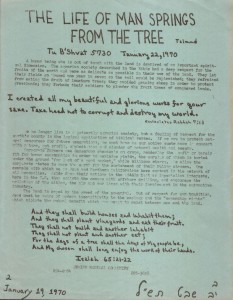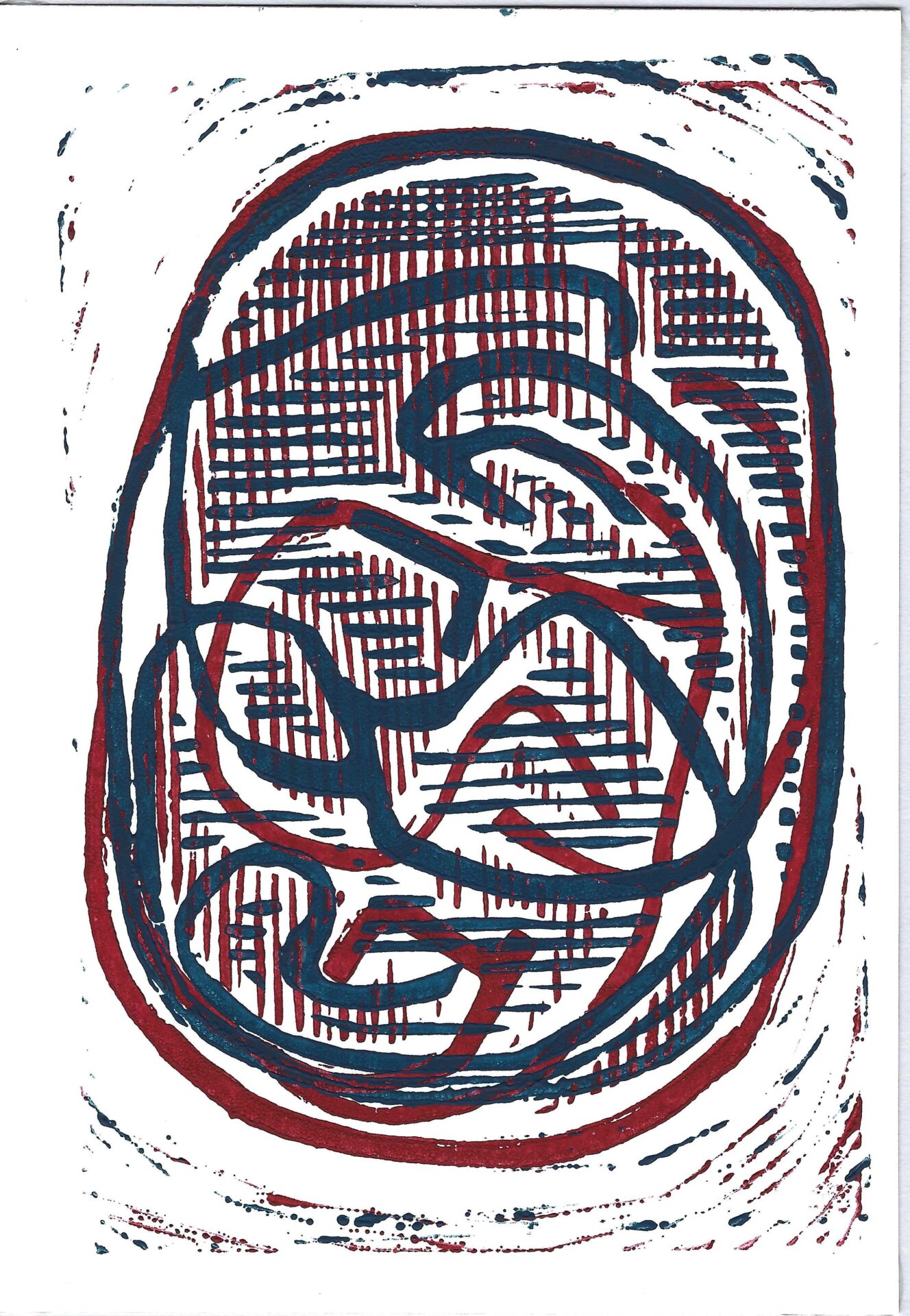a thought regarding the history of Jewish environmentalism
In January of 1970 I needed to make (what for me then was) a significant personal decision. I was born on January 22 on the Gregorian calendar. However, the year I was born, that date corresponded with Rosh Jodesh Sh’vat. I noticed then, that in 1970 January 22 would coincide with Tu b’Sh’vat. I had become more deeply aware of how the Jewish luni/solar calendar functioned and wanted to observe my birthday’s anniversary (by thanking my mother on her birthing-date). I needed to choose between two significant dates: Gregorian = Tu b’Sh’vat or Jewish = Rosh Jodesh Sh’vat. The bit that clinched my decision was when I learned that my brother, who had been born four years later (and two weeks earlier according to the Gregorian calendar) shared the same birth date on the Jewish calendar. Ever since then, when someone who is not an official of some kind asks when I was born, I tell them Rosh Jodesh Sh’vat.
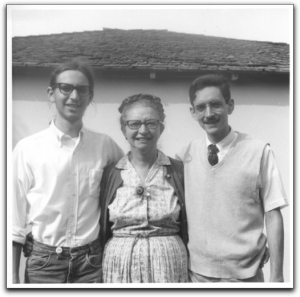
brothers and mother, approximately 6 months before January 22, 1970
leafleting the jews
I have written elsewhere about leafleting. That year, on January 19, 1970, the Jewish Radical Community [of Los Angeles] issued its second leaflet (for that year or ever?):
THE LIFE OF MAN SPRINGS
FROM THE TREE
-Talmud
Tu B’Shvat 5730 ……………………………January 22, 1970
A human being who is out of touch with the land is deprived of an important spiritual dimension. The agrarian society described in the bible had a deep respect for the fruits of the earth and were as delicate as possible in their use of the land. They let their fields go unused one year in seven so the soil could be replenished; they refrained from eating the fruit of immature trees; they avoided grazing sheep in order to protect grasslands; they forbade their soldiers to plunder the fruit trees of conquered lands.
I created all my beautiful and glorious works for your sake. Take heed not to corrupt and destroy my world.
Ecclesiastes Rabbah 7:13
We no longer live in a primarily agrarian society, but a feeling of respect for the earth’s bounty is the logical application of biblical verses. If we are to protect natural resources for future generations, we must have as our motive sustenance in concert with nature not profit, exploitation and plunder of natural wealth and beauty.
Corporate farmers use dangerous chemicals on crops, rendering them unfit or barely fit for human consumption in order to maximize yields, the surplus of which is buried under the ground “for lack of a good market,” while millions starve. We allow the corporate states to rape the earth for the enrichment of their ruling classes. One example with which we as Jews and Southern Californians have contact is the network of oil monopolies. Aside from their actions in the Middle East as imperialist interest, here in the U.S. they pollute the oceans with offshore drilling, and encourage the pollution of the cities, the air and our lives with their involvement in the automotive industry.
The land is raped by the greed of the powerful. Out of respect for our tradition, Jews must be aware of modern insensitivity to the ecology and the “ownership rights” which violate the nature benefit which was meant to exist between men and the land.
And they shall build houses and inhabit them;
And they shall plant vineyards and eat their fruit.
They shall not build and another inhabit
They shall not plant and another eat;
For the days of a tree shall the days of My people be,
And My chosen shall long enjoy the work of their hands.
Isaiah 65:21–22
buttons and trees
Very few lapel buttons exist that refer to Tu b’Sh’vat directly. While at one time the Zionist youth movements in Los Angeles would use the opportunity to plant trees in recently burnt areas of Griffith Park in conjunction with the Jewish National Fund, the annual JNF button (with its image of or suggestion of tree planting) appears at the time of Yom haAtazmaut. The following button is from the Baltimore Hebrew Congregation, while it explicitly mentions planting a tree in 1991 similarly makes no suggestion that it is associated with Tu b’Sh’vat.
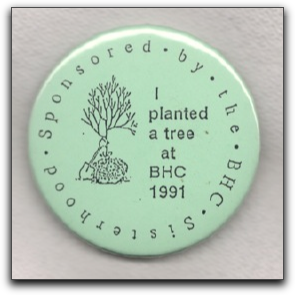
i planted a tree at bhc 1991
| Date: | 1991 |
| Size: | 5.71 |
| Pin Form: | clasp |
| Print Method: | celluloid |
| Text | Sponsored • by • the • BHC • Sisterhood • |
I
planted
a tree
at
BHC
1991
your lapel buttons
Many people have lapel buttons. They may be attached to a favorite hat or jacket you no longer wear, or poked into a cork-board on your wall. If you have any laying around that you do not feel emotionally attached to, please let me know. I preserve these for the Jewish people. At some point they will all go to an appropriate museum. You can see all the buttons shared to date.
We brothers took another photo with our mother a month before she died.
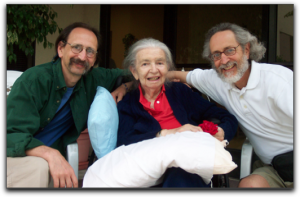
brothers and mother, approximately a month before her death
Now, as I prepare this post, 43 years after we first prepared the leaflet (it is in Jay’s printing), we brothers sit beside each other in his home on Kibbutz Hatzor-Ashdod, reviewing photos of the two of us and of our mother (and other members of the family). And we continue to share (among many others) common ideas about environmentalism, politics and Jewish life. And I wonder, when did the Jewish environmental movement begin.

